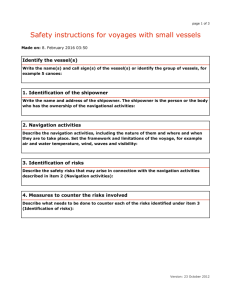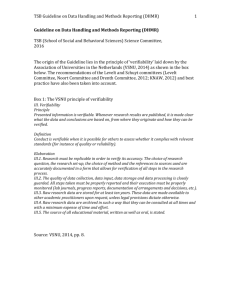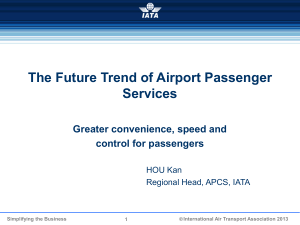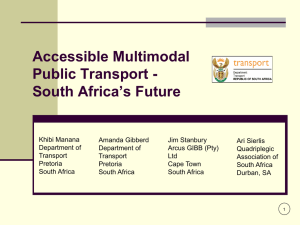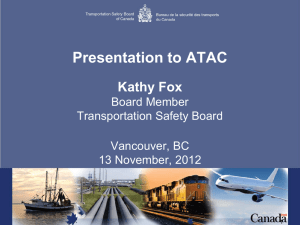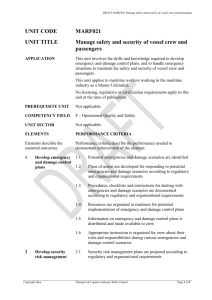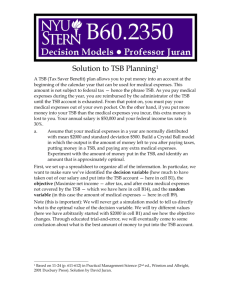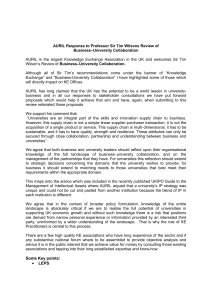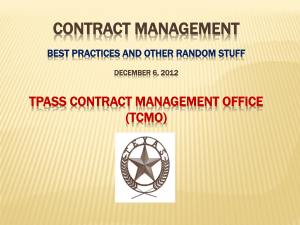to see PowerPoint Presentation
advertisement
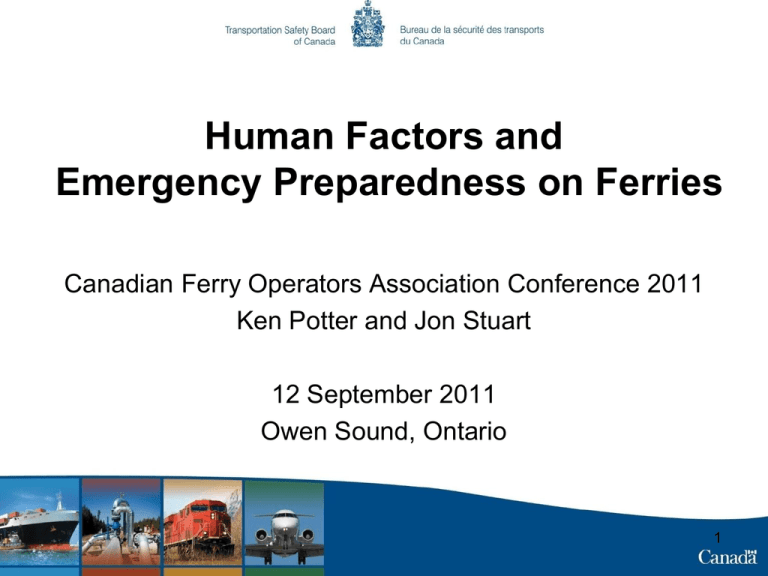
Human Factors and Emergency Preparedness on Ferries Canadian Ferry Operators Association Conference 2011 Ken Potter and Jon Stuart 12 September 2011 Owen Sound, Ontario 1 TSB Mandate • The Transportation Safety Board of Canada (TSB) is an independent agency that investigates marine, pipeline, railway and aviation transportation occurrences. • Its sole aim is the advancement of transportation safety. It does not assign fault or determine civil or criminal liability. • The mission of the TSB is to conduct independent safety investigations and communicate risks in the transportation system. 2 Marine Occurrences • Over 600 marine occurrences reported annually to TSB • TSB investigates selected occurrences • 8 to 10 occurrences per year for Marine Branch • 22 marine investigators, 4 human factors investigators 3 Integrated Safety Investigation Methodology (ISIM) • Scientific approach to investigations • Built on best practices and safety science • Backbone of TSB investigative processes 4 ISIM Process Occurrence Assessment Occu rre n ce Occu rre n ce Asse ssm e n t Data Collection Da ta Co l l e cti o n Occurrence Sequence of Events Occu rre n ce Se q u e n ce o f Eve n ts Integrated Investigation Process In te g ra te d In ve sti g a ti o n Pro ce ss Risk Assessment Process Defense Analysis Risk Control Option Analysis Safety Communication Process Ri sk Asse ssm e n t Pro ce ss De fe n se An a l ysi s Ri sk Co n tro l Op ti o n An a l ysi s Sa fe ty Co m m u n i ca ti o n Pro ce ss 5 Sequence of Events Event - 1 Event - 2 Event n-1 Time or est..time 23:15 E 1400 Accident Event n+1 Event n+2 Data source Skipper VDR Actor Action List increased Pilot ordered full astern (Descriptors) 30 degrees to starboard Event Location Event Location 6 6 Event Why?? Because Why?? Because Why?? Because 7 Basic Assumptions of Accident Causes • Clear relationship between number of accidents and incidents • Accidents and incidents are never the result of one cause • At least 80% of all accidents and incidents involve human factors 8 Human Factors “Ships are alright, it’s the men in them” Joseph Conrad 9 Human Factors (Not “Human Error”) • Human factors involvement is not restricted to vessel crew • Includes crew, shore management, board of directors, and regulators • Vessels and their crews operate within a complex relationship 10 MANAGEMENT CREW Mission VESSEL ENVIRON. 11 Human Factors The potential for an accident is created when human actions interact with unsafe conditions. 12 Unsafe Condition • A situation that has the potential to initiate, exacerbate, or otherwise facilitate an accident or incident. • E.g.: Organizational factors such as inadequate emergency preparedness 13 Unsafe Act + Unsafe Condition = Accident 14 Human Factors Elements in Marine Investigations • • • • Fatigue Training Ergonomics Medical Fitness • Organizational Factors 15 16 MV Joseph and Clara Smallwood, 2003 17 MV Joseph and Clara Smallwood (2003) Drop trailer fire damage 18 Fire Damage Heat damage to private motor vehicle 19 Human Factors Aspects of the Investigation • Extensive interviews with bridge team, crew, and passengers – Knowledge and use of alarm system – Decision on how to get passengers off vessel – Search for, and management of, passengers 20 A Selection of Findings • Passengers were unnecessarily exposed to a potentially unsafe environment by driving their vehicles off deck 3, rather than evacuating the vessel through the gangway. • Crew members of non-convention passenger vessels are not required to have crowd and crisis management training or human behavior training. • Convention and non-convention passenger vessels are not required to record and retain the names of passengers on board, with the exception of disabled persons. 21 Queen of the North (2006) 22 Human Factors Aspects of the Investigation • Extensive interviews with bridge team, crew and passengers – Knowledge and use of alarm system – Decision on how to get passengers off vessel – Search for and management of passengers 23 A Selection of Findings • The lack of a completed evacuation plan/procedure, in addition to inadequate passenger safety training and drills, left some crew members of the Queen of the North underprepared to handle the abandonment, thereby placing passengers at risk. • No accurate head count of passengers and crew was taken before abandoning the vessel, thus precluding a focused search for missing persons at that time. 24 ECOLOS 25 TSB Watchlist • The Watchlist identifies the safety issues investigated by the TSB that pose the greatest risk to Canadians. • In each case, actions taken to date are inadequate and concrete steps must be taken on the part of industry and the regulator to eliminate these risks. 26 TSB Watchlist The Problem: Emergency preparedness on large passenger ferries in Canada needs improvement The Solution: Large ferry operators must adopt and practice effective emergency preparedness procedures. This includes maintaining detailed passenger lists and practicing evacuations. 27 Summary • The TSB’s structured approach to human factors investigations through the ISIM methodology has identified systemic organizational safety issues within the passenger vessel industry. • While the TSB notes that improvements are being made, the problems with emergency preparedness on passenger ferries still exists as evidenced by continuing occurrences on other vessels. 28 29
